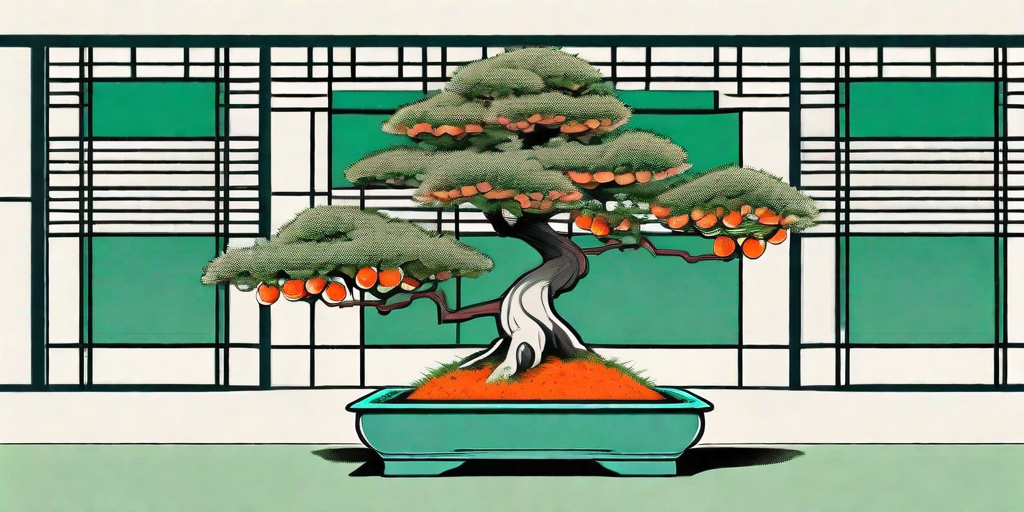
Welcome to the world of miniature orchards, where the fruits are small but the satisfaction is immense. Today, we're diving into the fascinating and somewhat cheeky world of persimmon bonsai. If you've ever fancied growing your own tiny fruit tree, you're in the right place. So, buckle up and get ready to embark on a journey of bonsai cultivation.
The Persimmon Bonsai: A Brief Introduction
Before we delve into the nitty-gritty of growing a persimmon bonsai, let's take a moment to appreciate this tiny marvel. The persimmon bonsai is a miniature version of the persimmon tree, a fruit-bearing tree native to China. It's like the tree went on a diet and decided to stay petite. But don't be fooled by its size; the persimmon bonsai is as robust and fruitful as its larger counterpart.
One of the most appealing aspects of the persimmon bonsai is its ability to bear fruit. Yes, you read that right. This tiny tree can produce tiny persimmons, perfect for dollhouse dinners or feeding an army of ants. It's a delightful sight that adds a touch of whimsy to any home or garden.
Getting Started with Your Persimmon Bonsai
Now that we've piqued your interest, let's get down to business. Growing a persimmon bonsai may seem daunting, but with a bit of patience and a dash of humor, you'll be a bonsai master in no time.
First things first, you'll need a persimmon seed or sapling. You can find these at your local nursery or online. Once you have your seed or sapling, it's time to prepare your bonsai pot. This is where your persimmon bonsai will call home, so make sure it's comfortable.
Choosing the Right Bonsai Pot
When it comes to selecting a bonsai pot, size matters. You'll want a pot that's large enough to accommodate your persimmon bonsai as it grows, but not so large that it dwarfs your tiny tree. A good rule of thumb is to choose a pot that's about two-thirds the height of your tree.
Next, consider the material of your pot. Bonsai pots are typically made of ceramic, but you can also find pots made of plastic or metal. Ceramic pots are a popular choice due to their durability and aesthetic appeal, but plastic pots are a more affordable option. Metal pots, on the other hand, are a bit of a wild card. They're sturdy and long-lasting, but they can also heat up in the sun, which can be detrimental to your bonsai's health.
Caring for Your Persimmon Bonsai
Once you've planted your persimmon bonsai, it's time to shower it with love and care. This includes regular watering, pruning, and feeding. Remember, a happy bonsai is a fruitful bonsai.
Watering your persimmon bonsai is a delicate balance. Too much water can lead to root rot, while too little can leave your tree parched. The key is to keep the soil moist, but not waterlogged. A good rule of thumb is to water your bonsai when the top inch of soil feels dry to the touch.
Pruning and Shaping Your Bonsai
Pruning is an essential part of bonsai care. It helps to maintain the tree's miniature size and promotes healthy growth. When pruning your persimmon bonsai, aim to remove any dead or diseased branches. You can also prune to shape your tree, but remember, the goal is to mimic nature, not to create a topiary masterpiece.
Shaping your bonsai is a bit like sculpting. It involves wiring the branches to guide their growth. This can be a bit tricky, but with a bit of practice, you'll be bending and shaping like a pro. Just remember to be gentle; bonsai branches are delicate and can easily break.
FAQs
Can I grow a persimmon bonsai indoors?
Yes, you can grow a persimmon bonsai indoors, provided it gets enough light. Place your bonsai near a south-facing window for the best results.
How long does it take for a persimmon bonsai to bear fruit?
Patience, grasshopper. It can take several years for a persimmon bonsai to bear fruit. But trust us, the wait is worth it.
Do I need to fertilize my persimmon bonsai?
Yes, fertilizing your persimmon bonsai is essential for its health and growth. Use a balanced bonsai fertilizer and follow the package instructions for application rates.
Conclusion
There you have it, a comprehensive guide to growing a persimmon bonsai. It's a journey filled with patience, care, and a bit of cheekiness. But the reward—a miniature fruit-bearing tree—is well worth the effort. So, why not give it a shot? Who knows, you might just find yourself falling in love with the art of bonsai.















